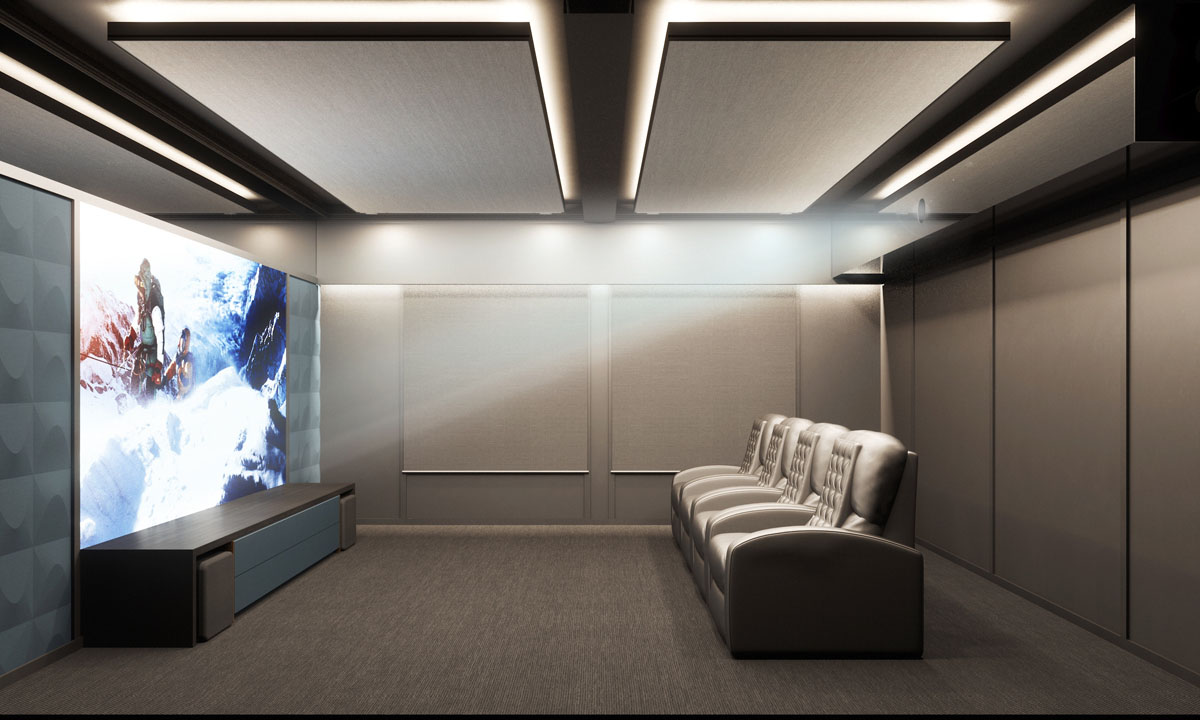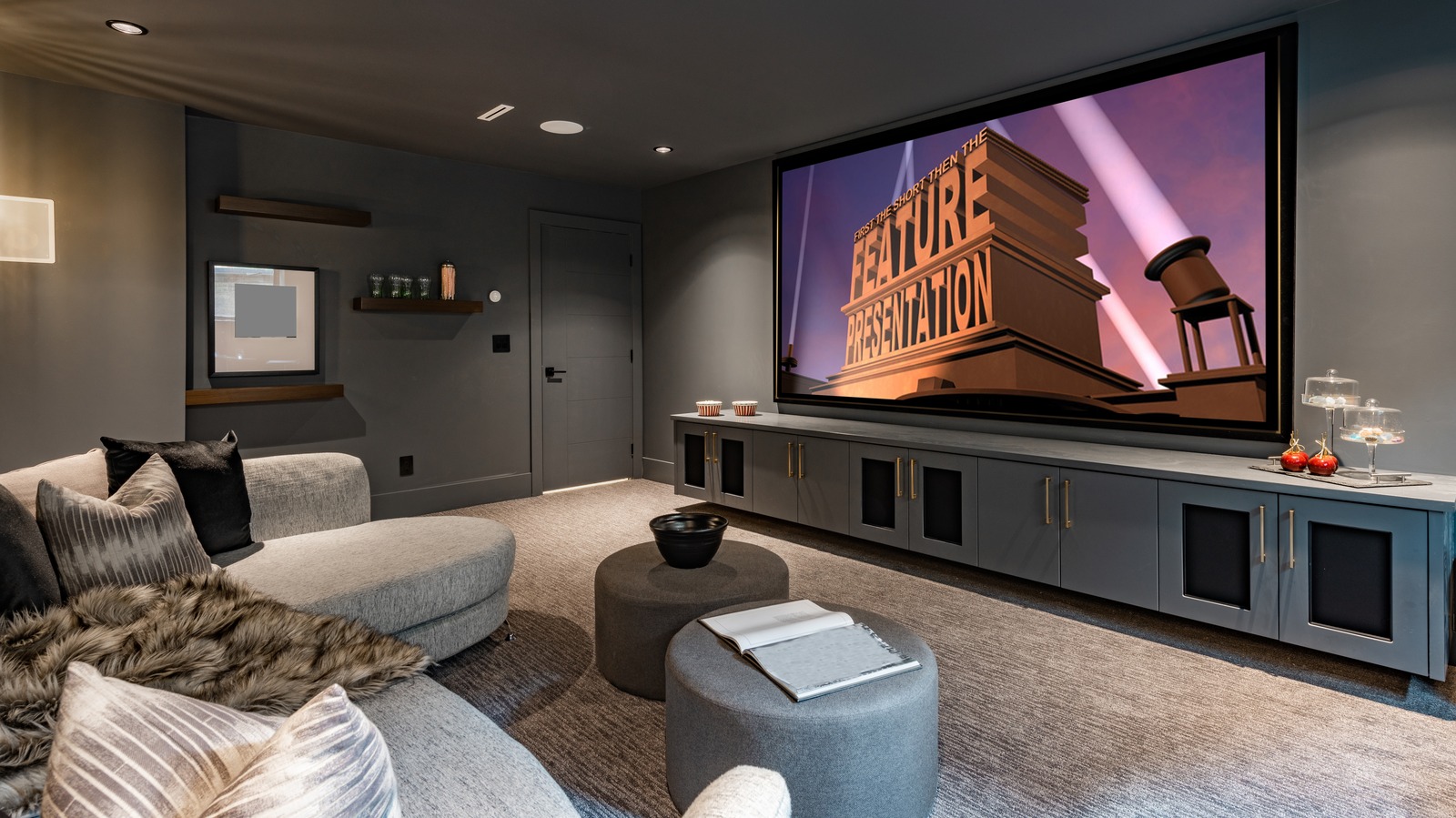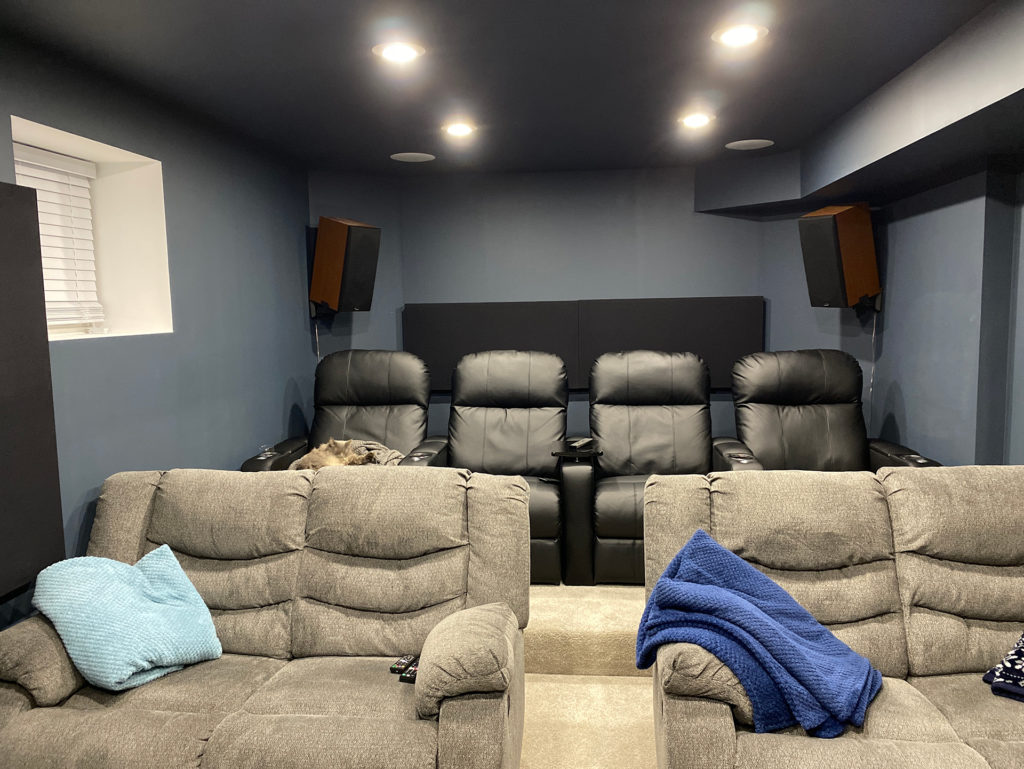Home Theater 101: Whatever You Need to Know for a Cinematic Experience in the house
Producing a home cinema that equals the motion picture experience of a commercial theater entails mindful factor to consider of multiple parts, including display selection, sound systems, and area format. Whether you are considering the ideal screen dimension or the ins and outs of surround audio, comprehending these principles is crucial.
Picking the Right Screen
When establishing a home cinema, choosing the best screen can make or break the watching experience - home theater tampa. The screen offers as the centerpiece of your setup, affecting photo top quality, checking out angles, and overall aesthetic. Key aspects to consider include screen resolution, dimension, and kind
First, establish the proper display dimension based upon your space dimensions and seating range. A general standard is to sit about 1.5 to 2.5 times the angled screen dimension for ideal viewing. Next, select between various screen kinds, such as fixed-frame, mechanized, or retracting displays, each offering distinctive advantages. Fixed-frame screens typically supply the very best image high quality, while mechanized alternatives enable versatility in space usage.
Resolution is another important factor. For a genuinely immersive experience, consider a screen created for 4K or even 8K content, making certain sharpness and clearness. Furthermore, take into consideration the screen's gain, which impacts illumination and comparison; a greater gain can improve brightness in well-lit rooms, while a lower gain may be a lot more ideal for darker environments.
Selecting Audio Equipment
Audio equipment is a vital element of any home theater system, substantially boosting the total viewing experience. The option of audio equipment can establish the deepness, quality, and immersion of sound, essential for producing a cinematic atmosphere.
When choosing audio tools, consider a surround stereo, which commonly consists of a receiver, numerous audio speakers, and a speaker. A 5.1 or 7.1 network system is suggested, where the first number stands for the audio speakers and the second the subwoofer, providing an immersive soundscape. The receiver is the heart of the system, handling sound and video signals, and ought to support modern-day formats like Dolby Atmos for an improved spatial experience.
Quality speakers are vital; seek models that offer a balanced noise profile with excellent bass action. Floor-standing speakers can create richer audio, while shelf options conserve room. Furthermore, consider cordless choices for convenience of setup, although wired systems typically deliver exceptional performance.

Optimal Seating Plans
Creating an ideal home theater experience pivots dramatically on optimal seating arrangements. The setup of seats plays an essential role in both convenience and watching high quality, directly impacting the total motion picture experience.
First, think about the screen size and checking out distance. A common standard is to position seats at a range around 1.5 to 2.5 times the diagonal dimension of the display. This guarantees an immersive experience without stressing the eyes.
Following, elevation is important. The back rows need to be greater than the front to prevent obstructions if your seating is in a tiered layout. For flat seats, make sure that the front row is not as well close to the display, and that every person has a clear view.
Furthermore, consider the plan in terms of social characteristics. Group seats can improve the communal experience, while specific seats may be favored for personal watching.

Lastly, focus on convenience with ergonomic seating that supports extended watching durations. Incorporating recliners or supported seats can dramatically enhance the experience, making the home cinema a preferred location for both home entertainment and leisure.
Lighting and Atmosphere
Effective lights and atmosphere are crucial parts of a properly designed home movie theater, as they dramatically affect the watching experience. The best illumination can boost the motion picture feeling, while bad choices can interfere with it. For optimal results, consider a layered lights method that consists of ambient, job, and accent illumination.
Ambient illumination provides basic lighting, ensuring that the area is not totally dark, which can stress the eyes. Dimmer buttons are very suggested, allowing for adjustments based on the web content being seen. Task lights, such as wall surface sconces or floor lamps, supplies practical lighting for tasks like reading or navigating the space without interrupting the overall atmosphere.
Accent lighting can be utilized to highlight architectural features or develop prime focus, including depth and rate of interest to the space. LED strip lights behind displays or along shelves can supply a subtle radiance that improves the aesthetic experience without frustrating the audience.

Wiring and Installation Tips
A tactical circuitry configuration is important for attaining optimum performance in your home movie theater system. Correct electrical wiring not only ensures high-grade audio and video clip signals yet also enhances the total aesthetic of your space. Begin by mapping find out your design, recognizing where each component will certainly be put, including your display, speakers, and receiver.
When picking wires, focus on high-quality, appropriately determined circuitry to reduce signal loss. HDMI cables should be used for video connections, while audio speaker cable ought to match the requirements of your audio speakers and amplifier. Go with in-wall ranked cables to follow safety and security standards and maintain a tidy appearance.

Verdict
In recap, developing an exceptional home movie theater experience needs careful consideration of different components, consisting of screen selection, audio devices, seating setups, illumination, and circuitry. By prioritizing these variables, a motion picture atmosphere can be successfully reproduced, enabling for immersive viewing experiences that match conventional movie theater setups.
Producing a home cinema that rivals the cinematic experience of an industrial theatre entails mindful factor to consider of numerous parts, including screen choice, sound systems, and room design.When setting up a home cinema, picking the best display can make or break the seeing experience. Next, pick between different screen types, such as fixed-frame, mechanized, or retracting screens, each offering unique advantages. For an absolutely immersive experience, think about a screen developed straight from the source for 4K or also 8K material, guaranteeing intensity and clearness.In recap, producing a phenomenal home theater experience calls for cautious factor to consider of numerous aspects, consisting of screen option, audio equipment, seating arrangements, illumination, and electrical wiring.